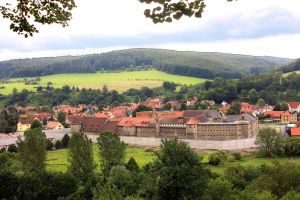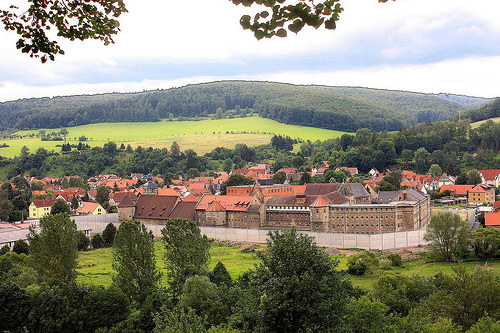
The late Early Pleistocene site near Untermassfeld, in Germany, is now well known for a rich array of fauna dating back to about 1.07 million years ago, including simple ‘Mode 1’ (or Oldowan-type) stone tools evidencing early human occupation. Now researchers Günter Landeck and Joan Garcia Garriga report, for the first time, evidence of early human butchery in the form of cut marks on animal bones and intentional hammerstone-related bone breakage. These human-modified bones were recovered in a small faunal subsample excavated from levels with simple ‘Mode 1’ stone tools. The butchered assemblage was found during fieldwork and surveying of ancient riverbanks and channel erosion sediments. The report authors state that the frequent occurrence of butchery traces on bones of large-sized herd animals, such as an ancient species of Bison, may suggest that the early human occupiers of the site had an enhanced need for meat because of changes resulting in a depletion of nutritive plants in winter. The study authors further note that early access to the carcasses before they were consumed by other carnivores made it possible for the early humans to acquire a sufficient amount of meat for subsistence. The researchers conclude that the stone tools and human-altered faunal remains at Untermassfeld provide evidence for the oldest early human settlement at European continental mid-latitudes, or about 50° N.
_________________________________________________
A view of the picturesque modern village of Untermassfeld, near which the prehistoric site is located. Winfried Gaenssler, Wikimedia Commons
__________________________________________________________________
Untermassfeld is one among a few sites discovered in Europe that provide evidence of a Lower Pleistocene arrival of early humans in Europe. The findings from these sites have helped to formulate a new perspective on the dispersal pattern and timing of the prehistoric movement of humans, ultimately back to African origins.
The study is published in press in the Journal of Human Evolution.
_________________________________________________

______________________________________________
Travel and learn with Far Horizons.
____________________________________________
This richly illustrated issue includes the following stories: Recent findings shedding new light on the whereabouts of the remains of Philip of Macedon, father of Alexander the Great; how an archaeologist-sculptor is bringing bones of the dead back to life; archaeologists uncovering town life at the dawn of civilization; an exclusive interview with internationally acclaimed archaeologist James M. Adovasio about what makes the Meadowcroft Rockshelter prominent in the ongoing search for the first Americans; what archaeologists are finding at the site of the ancient city of Gath, the home town of the biblical Philistine giant, Goliath; and how scientists are redrawing the picture of human evolution in Europe. Find it on Amazon.com.









